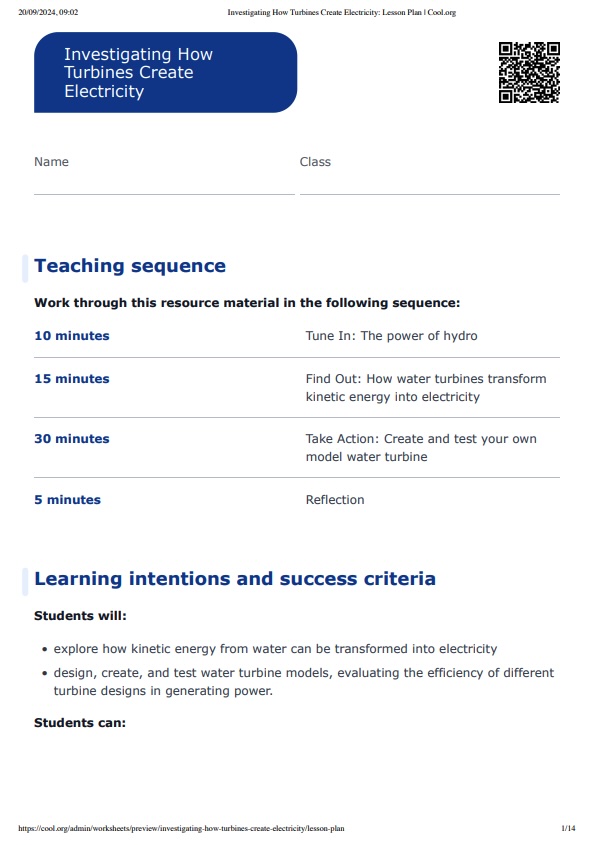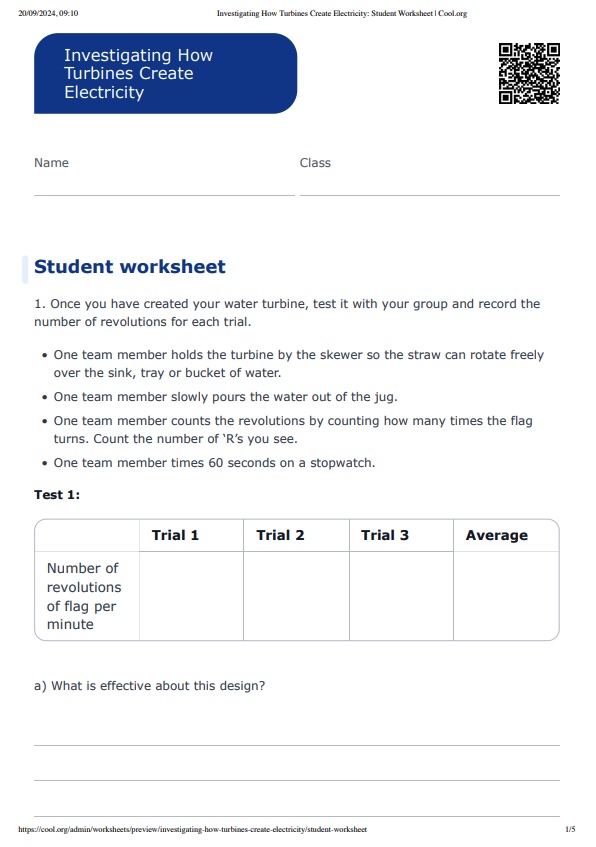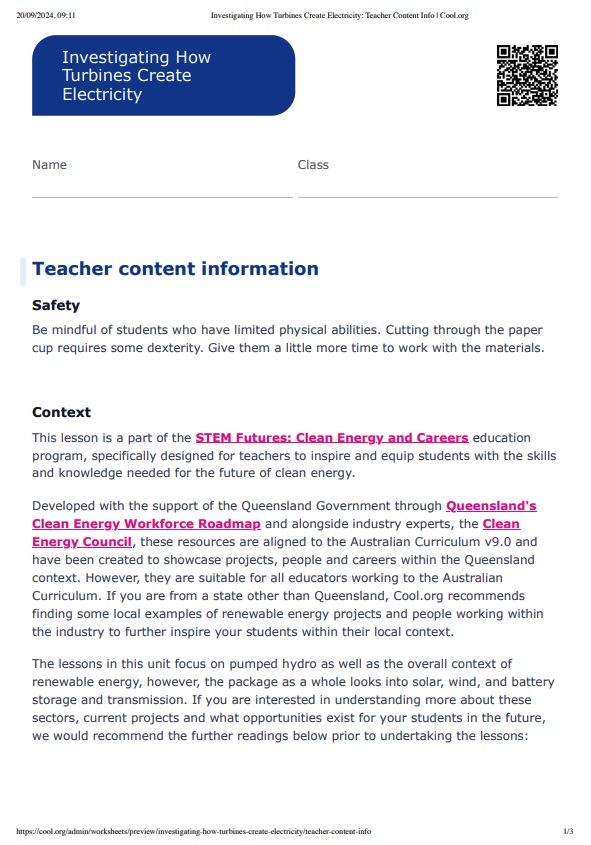Lesson summary
In this lesson, students will explore how electricity can be generated from the kinetic energy of water. They will analyse how force, motion, and energy are applied in the design and control of engineered systems by creating and testing a model water turbine. Through hands-on experimentation, students will iterate and refine their turbine designs for efficiency. This hands-on activity, which includes examining the Kidston pumped hydro renewable energy Project, helps students grasp the concepts of renewable energy and the importance of sustainable solutions to energy needs.
Learning intentions:
Students will...
- explore how kinetic energy from water can be transformed into electricity
- learn about some of the occupations in the hydropower industry
- design, create and test water turbine models, evaluating the efficiency of different turbine designs when generating power.
Success criteria:
Students can...
- describe how kinetic energy from water flow is turned into mechanical and electrical energy by water turbines
- outline the process of how water turbines are used to create renewable energy in pumped hydro systems
- design a functional model water turbine that effectively transforms kinetic energy into mechanical energy, and evaluate the efficiency of their turbine design.
Lesson guides and printables
Curriculum links
Select your curriculum from the options below.
Lesson details
Skills
This lesson is designed to build students’ competencies in the following skills:
- creative thinking
- critical thinking
- collaboration
- problem-solving
- prototyping
Curriculum Mapping
Australian Curriculum (v9.0) content description: Year 7 & 8, Design and Technologies
Students learn to:
- analyse how force, motion and energy are used to manipulate and control engineered systems (AC9TDE8K03)
- analyse needs or opportunities for designing, and investigate and select materials, components, tools, equipment and processes to create designed solutions (AC9TDE8P01)
- generate, test, iterate and communicate design ideas, processes and solutions using technical terms and graphical representation techniques, including using digital tools (AC9TDE8P02)
- select, justify and use suitable materials, components, tools, equipment, skills and processes to safely make designed solutions (AC9TDE8P03).
Australian Curriculum (v9.0) content descriptions: Related content
Year 8 Physical Sciences
Students learn to:
- classify different types of energy as kinetic or potential and investigate energy transfer and transformations in simple systems (AC9S8U05).
Relevant parts of Year 7 & 8 achievement standards: Students can explain how the features of technologies impact on design decisions, and create designed solutions based on analysis of needs or opportunities. Students can create and adapt design ideas, processes and solutions, and justify their decisions against developed design criteria that include sustainability.
NSW Syllabus outcomes:
Stage 4 Design and Technology
- identifies and describes a range of design concepts and processes (DT4-1)
- describes and follows a process of design when developing design ideas and solutions (DT4-2)
General capabilities: Critical and Creative Thinking, Ethical Understanding, Personal and Social Capability
Cross-curriculum priority: Sustainability
Level of teacher scaffolding: Medium: the teacher will need to describe how hydroelectricity is generated and how water turbines work, and provide guidance and support as students design, create and test their model water turbines.
UN Sustainable Development Goals
- Target 9.4: By 2030, upgrade infrastructure and retrofit industries to make them sustainable, with increased resource-use efficiency and greater adoption of clean and environmentally sound technologies and industrial processes, with all countries taking action in accordance with their respective capabilities.
Resources Required
- Bottle or container of water for each group
- Device to show audiovisual material (videos and Visual Explainer)
- Funnels
- Scissors
- Stopwatch (or device that has this function)
- Student Worksheet
- Tray, bucket or sink to sit the turbines in
- Water turbine building materials for each group (1 x paper/plastic cup, 1 x straw, 2 x wooden skewers per group, sticky tape)
- Whiteboard and markers
Additional Info
This lesson has been developed in partnership with the Queensland Government through Queensland's Clean Energy Workforce Roadmap. Cool.org would like to acknowledge and express our gratitude to the Clean Energy Council for the expertise and advice provided in creating these resources.
Related Professional Learning
STEM Professional Learning Pathway
Quick summary: Enhance your practice with Cool.org's STEM Professional Learning Pathway. This year-long plan is designed to build your skills and capabilities in teaching STEM, ultimately transforming you into a STEM Innovator. The pathway will prepare you to integrate STEM education effectively, adapt to technological advancements and inspire students to succeed in a rapidly evolving world.





Welcome back!
Don't have an account yet?
Log in with:
Create your free Cool.org account.
Many of our resources are free, with an option to upgrade to Cool+ for premium content.
Already have an account?
Sign up with:
By signing up you accept Cool.org's Terms and Conditions(Opens in new tab) and Privacy Policy(Opens in new tab).